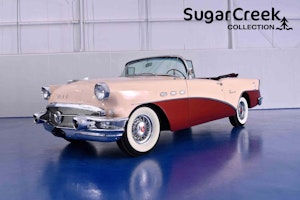Media | Articles
Celebrate a half-century of BMW M with this broad new book
The “most sacred ground rule” at BMW M, Tony Lewin writes,“is that every new model must outperform the one it replaces.”
Reading between the lines, you get German cars in a nutshell: Ability often trumps feedback. Lewin, a reporter for Automotive News Europe and the author of three books on BMW, is no stranger to this concept. His latest work, BMW M: 50 Years of the Ultimate Driving Machines, is a survey of a brand so potent, the German government long ago deemed it an independent carmaker, with its own VINs.

Lewin’s work is attractive and bright, with crisp writing, brilliant images, and key insight into what makes the Motorsport division excel. First comes M’s founding CEO, Jochen Neerpasch, outlining how M was essentially birthed by Bob Lutz (later of Chrysler and GM). Next, you see where the division’s engines gained one throttle per cylinder, an early signature; how they were married to other signatures like rear-drive and natural aspiration; and how the chassis philosophy became, as an M5 engineer once told me, “always faster than the engine.”

Later, of course, those ideas were dumped. Once, BMW executives called M-badged SUVs anathema; these days, the company sells four such beasts. That grip-first chassis philosophy was gradually dialed back as the company followed archrival Mercedes into tire-smoking track toys. To harp on this hypocrisy is to forget that we all make ironclad statements when we are young, then compromise when real life sets in.
I have a pet theory that the genuinely great, fast BMWs of history were all light accidents, regardless of any official line. Picture the engineering lunatics stealing the keys to the asylum. Lewin hints at this pattern, but most dips in fortune are omitted or reduced to one-liners. “Too firm, too mute, too soulless,” he quotes Top Gear, on an X3 M. “Too much of what we don’t love about modern cars and too little of what we love about great BMWs.”
Marketplace
Buy and sell classics with confidence

What does that line mean? Mostly that details matter, in cars or stories. Take the E60-chassis M5, the V-10 supersedan of 2004–10. In the rest of the world, that model wore a purpose-built, seven-speed automated manual. Lewin never mentions that American customers asked for and got a traditional manual in the car, in the form of a six-speed originally designed for V-8s. A happy moment, if not for how the transmission’s wide gearing numbed the experience, that high-strung V-10 too often off the cam.
“The Germans were reluctant to put effort or money there,” a Munich rep once explained to me. “Manuals are old tech. They think we shouldn’t want what we want.”
How telling, our wants and their needs. Several years ago, I attended a tech preview at BMW’s headquarters in Munich. An engineer there noted that BMW’s R&D pockets are relatively shallow next to those of, say, Mercedes. “They can afford to bet on many answers, where … we must put our eggs in fewer baskets.”
“Betting on answers” is a nice summary of human existence, but it’s also the core of any good story. Sadly, Lewin merely skims the backstories of M’s many bets. 50 Years holds a passion for model detail, but context is too often kept offstage. You’d do well to keep a copy on your shelf, but with luck, the next edition will outdo the first. A title this broad deserves the rest of the story.
This feature originally ran in the Hagerty print magazine Hagerty Driver’s Club, a perk of one of our exclusive member programs.
Check out the Hagerty Media homepage so you don’t miss a single story, or better yet, bookmark us.















Ah, the bit about the manual transmission is the very illustration of the difference between an American engineer and a German engineer. The former will argue till he is blue in the face about why he wants something while the latter will do the same in explaining why you don’t need it.